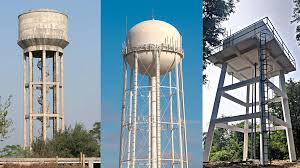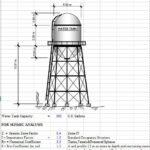
What is an Elevated Water Tank? Advantages and Application
27 May 2024Table of Contents
What is an Elevated Water Tank? Advantages and Application
Elevated water tanks are a cornerstone of water supply systems worldwide, providing consistent water pressure and reliable storage. These towering structures are more than just landmarks—they’re vital for efficient water distribution in both urban and rural areas. In this comprehensive guide, we delve into the design, benefits, applications, and maintenance of elevated water tanks.
What is an Elevated Water Tank?
An elevated water tank is a storage tank mounted on a tower or support structure to maintain adequate water pressure within a distribution system. Leveraging gravity, these tanks ensure a steady supply of water to homes, businesses, and industries, even in times of peak demand.
Design and Construction of Elevated Water Tanks
The design of elevated water tanks is driven by factors like capacity, height, and location. Key components include:
- Tank Structure
Tanks are typically made from steel, concrete, or reinforced plastic, chosen based on capacity, environmental factors, and budget constraints. - Support Structure
Built from durable materials like steel or concrete, the support structure must bear the tank’s weight and withstand natural forces such as wind or earthquakes. - Foundation
A stable foundation ensures the system’s safety, accounting for soil conditions, load capacity, and local regulations. - Height
Height is a critical design element, as taller tanks create higher water pressure and can serve larger areas, including elevated locations. - Capacity
Tanks are designed to meet the specific water demand, with capacities ranging from a few thousand to several million gallons.
Benefits of Elevated Water Tanks
Elevated water tanks offer several advantages, making them an essential part of water supply infrastructure:
- Consistent Water Pressure
These tanks use gravity to maintain steady water flow, ensuring reliable pressure even during high-demand periods. - Emergency Storage
During power outages or disasters, the stored water acts as a critical backup supply. - Cost-Effective Operation
By minimizing energy use for water distribution, elevated tanks reduce operational costs compared to pump-reliant systems. - Scalability
They can be easily scaled to meet growing community needs by adding more tanks as demand increases. - Enhanced Water Quality
The elevated design helps prevent contamination by keeping water storage above ground level and away from pollutants.
Applications of Elevated Water Tanks
Elevated water tanks play a crucial role in a variety of settings:
- Urban Water Supply
These tanks ensure consistent pressure for high-rise buildings and densely populated urban areas. - Rural Water Supply
In rural communities, they serve as a reliable source of clean water, even in remote locations far from centralized facilities. - Industrial Use
Industries depend on elevated tanks for consistent water supply to support manufacturing processes and operations. - Fire Protection
Elevated tanks provide essential water pressure for fire hydrants and sprinkler systems, improving fire safety in communities and industrial zones.
Maintenance and Longevity of Elevated Water Tanks
Proper maintenance is essential for the longevity and efficiency of elevated water tanks. Key maintenance activities include:
- Structural Inspections
Regular checks for wear, corrosion, and structural integrity to prevent failures. - Cleaning
Periodic cleaning removes sediments and biofilms, ensuring high water quality. - Coating and Painting
Protective coatings prevent rust and corrosion, especially in steel tanks. - Valve and Pipe Maintenance
Inspect valves and pipes to detect leaks and maintain efficiency. - Safety Inspections
Ensure ladders, railings, and access points comply with safety standards.
Conclusion
Elevated water tanks are indispensable for modern water supply systems. They ensure consistent water pressure, provide emergency storage, and offer cost-effective distribution. Their robust design and scalability make them suitable for urban, rural, and industrial applications. With regular maintenance, these tanks can reliably serve communities for decades.
By understanding the design, benefits, and applications of elevated water tanks, engineers and planners can make informed decisions to enhance water infrastructure, improve public health, and safeguard water resources for future generations.
Download our selection of Elevated Water Tank Calculation Spreadsheet








